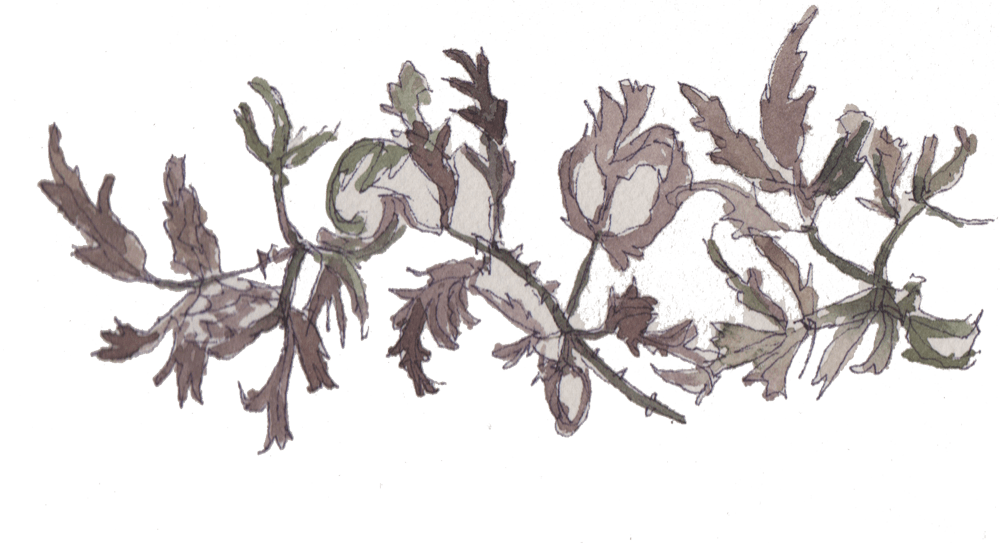

Symbols of Hiyu: Hawthorn
Hawthorn, Crataegus, and the May are all names for the hawthorn, the central hedgerow species. The May, which is also the name we gave our original vineyard parcel at Hiyu, takes its name from the month in which the Hawthorn blooms.
Artwork by China Tresemer
Traditionally, the hedgerow is a mix of wild-growing species — such as hawthorn, oak, sloe, and hazel trees — that line the roads and lanes of the British Isles. Along with harboring wildlife, like hedgehogs, these trees and their red berries attract a cacophony of birds. They also look like drops of blood and in folk medicine are used as a heart tonic.
In folklore, the hedgerow acts as a gateway or portal into the realm of fairies. Children were told that if they walked between the trees at a certain time of day, the fairies would spirit them away. Maybe it’s because hedgerows are little diversity patches, like forest gardens, wherein the magic of the environment is greater than the sum of its parts (or plants).



At Hiyu, the hedgerow lines our upper fence line. When we arrived, it was already populated with hawthorn and oak trees. As we began working in the vines, we discovered more baby Hawthorns, which we would dig up and add to the hedgerow. Then we threw in roses, elderberries, and hazel. Those baby hawthorns are now about seven years old and 20 feet tall. If we were in Britain, this is the year that hedgelayers would cut the trees almost all the way through, then bend the trunks over and weave them with stakes, so that the trees regrow and send shoots up through the weavings. This creates a natural livestock fence. Likewise, seven years is when medieval woodsmen customarily coppice trees, or cut them back to ground level. Not only does this provide wood, it stimulates new tree growth and ultimately extends the life of the trees.
We’ve tried to create a similarly reciprocal relationship with our plants, which has culminated in the vines growing up through the hedgerow. We harvest the grapes from these vines to make hedgerow wines, such as Espina, which features pinot gris as well as hawthorn berries, sloe berries, blackberries, rosehips and rose petals, all from the hedgerow. The result is light, ephemeral and delicate — and, in a sense, harkens back to the history of wine, when the Etruscans would trellis vines on elm trees.


Tales



